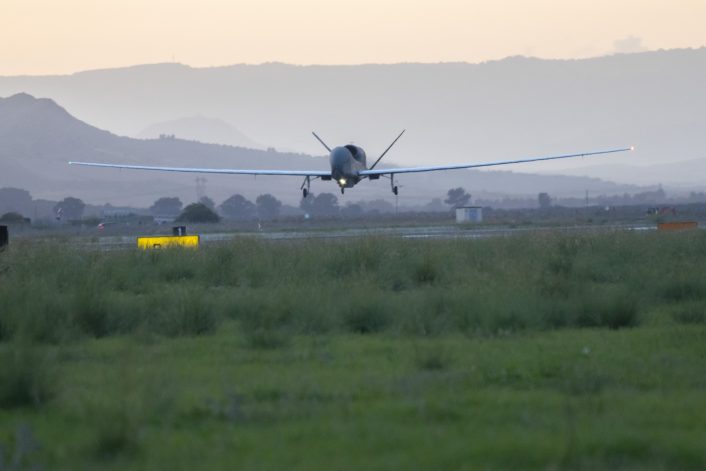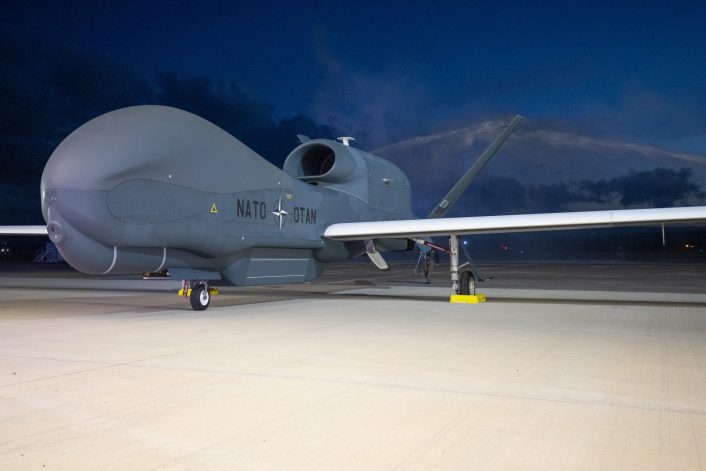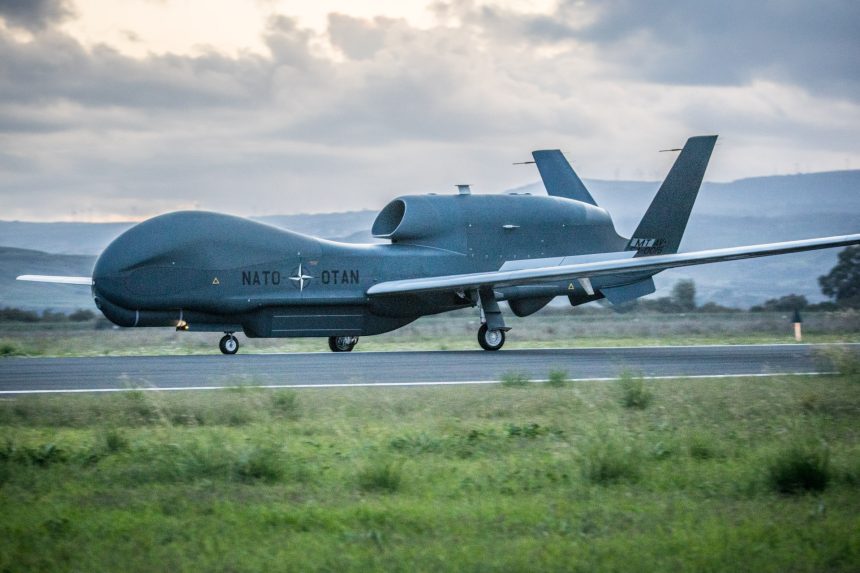The first RQ-4D of the NATO’s Alliance Ground Surveillance (AGS) system has landed at Sigonella.
On Nov. 21, 2019, NATO’s first of five RQ-4D arrived at Sigonella Air Base, Italy, MOB (Main Operating Base) of NATO’s AGS system. The aircraft is based on the Northrop Grumman Block 40 Global Hawk operated by the U.S. Air Force equipped with a state-of-the-art, multi-platform radar technology insertion programme (MP-RTIP) ground surveillance radar sensor, as well as an extensive suite of line-of-sight and beyond-line-of-sight, long-range, wideband data links. It will be used by the Alliance to perform all-weather ISR (Intelligence Surveillance and Reconnaissance) missions.
We have explained in detail what NATO AGS system in a recent article. Here’s an excerpt:
NATO’s AGS is a cooperative defense project to give the Alliance the ability to monitor “what’s happening on the ground, at long range, over periods of time, around the clock, in any weather” and to provide a state-of-the-art Intelligence, Surveillance and Reconnaissance (ISR) capability to NATO.
A group of 15 nations is acquiring the AGS, an integrated systems consisting of an air segment, a ground segment and a support segment.
The air segment consists of five NATO RQ-4D aircraft and remotely piloted aircraft (RPA) flight control elements.
The ground segment consists of a dedicated mission support facilities AGS MOB (Main Operating Base) in Sigonella, Italy, and a number of ground stations in mobile and transportable configurations, able to provide data-link connectivity, data-processing, exploitation capabilities and interfaces for interoperability.
According to NATO, “the ground segment will provide an interface between the AGS core system and a wide range of command, control, intelligence, surveillance and reconnaissance (C2ISR) systems. It will interconnect with multiple deployed and non-deployed operational users, as well as with reach-back facilities away from the surveillance area.”
While providing in-theatre situational awareness to commanders of deployed forces, the AGS system will be able to support a wide array of missions, going well beyond strategic or tactical reconnaissance: protection of ground troops and civilian populations; border control and maritime safety; anti-terror missions; crisis management and humanitarian assistance in natural disasters; as well as SAR support.

The unmanned aircraft, that will use the callsign “MAGMA” when flying operational missions, could be tracked online as it flew from California (most probably Palmdale where the aircraft carried out its first flight in 2015) to NAS Sigonella and orbited before landing at its new homebase:
Today in area
🔢 Thread
2019-11-21
1308z ⏱️ 14:08 CET
✈️ 🇺🇸 UAV RQ4 Global Hawk c/s #UAVGH000 departed from USA, orbiting off Sicily (tracked with ‘virtual’ italian ICAO hexcode #33FD6A). pic.twitter.com/oIWdda63wB
— Sergio Scandura (@scandura) November 21, 2019
Based on the photographs just released the aircraft sports the code MT AV-SA-0015.










